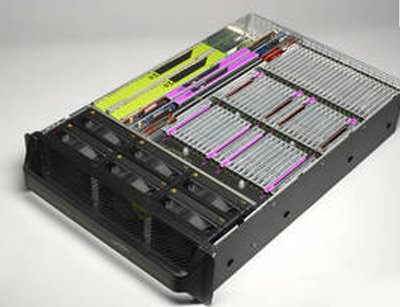Flash storage will never replace disc storage but the market for the technology is moving fast and flash is now finding its purpose in the data center, where it runs alongside solid state drives and inside servers, Ovum IT solutions analyst Tim Stammers said.
The technology has not only hit Stammer’s radar, numerous 2013 Prediction lists named Flash a technology to look out for in 2013 because of its potential to change the storage area as we know it, and the knock on effects this could have not only in application delivery but the wider data center.
Stammers said while it will still take “some years” for the Flash market to mature, reduced technology costs, the need for lower latency and better efficiency in the data center is putting Flash on the wish list of companies facing end-of-life replacement decisions.
This does not mean the technology does not come without challenges – for the end user and vendor community.
“Flash take up started several years ago with flash drives directly in servers. And although expensive, it was and still is a good way of accelerating the performance for performance-centered applications,” Stammers said.
“But back then it was expensive and relatively complex to do and was only for people with deep pockets and major performance problems.”
Stammers said Flash has seen wider uptake with flash drives fitted into disc arrays in the storage network with a number of vendors taking EMC’s lead to offer flash availability.
In 2012, EMC bought Flash vendor XtremeIO and IBM purchased Texas Memory Systems, which was already entering the Flash space, highlighting the interest by big vendors in the space.
Many big vendors are now offering Flash as an optional add on for storage products and Stammers said normally conservative storage purchasers have been accepting there offer.
“Surprisingly, even though Flash is much more expensive than disc, putting a little bit of flash into a storage box actually reduces the overall price of the storage box,” Stammers said.
“I know one vendor last year reported that with over half of its mid-range – not even expensive boxes – customers opted to take Flash, which shows it is extremely popular.”
Flash benefits
Flash memory – which has long been used by the consumer industry - is generally used to deliver data required more frequently, as it eliminates the need for analysis of the data base.
Being non-volatile, it has no moving parts – unlike disc – and can be electrically erased and reprogrammed.
The software can essentially make a number of storage decisions for you, the main one being what data is best stored in Flash. Its main benefit is in latency –for the delivery of data and applications – and efficiency, as it boosts the performance of the storage box.
Flash can also be installed in the server itself – a more complex process – and some vendors are even working on producing flash-only storage boxes, which are low in cost but at present used mostly by large Internet companies in the hyper-scale market to increase latency.
Stammers said he expects about 5% capacity of the disc array will be flash memory in future.
And because Flash uses far less power than disc, the savings will be seen right through to data center power and cooling costs.
“Flash is more physically dense then disc, so as well as generating less heat it generates heat in a more concentrated way which allows your cooling system to be much more efficient. The storage Networking Industry Association (SNIA) says it believes flash consumes 600 times less power than disc per Input/Output Operations per Second.”
The Flash challenge
Despite these efficiencies, cost is still a big challenge for Flash vendors, along with concerns over the finite life that comes with Flash.
“It is a new and complex technology, and using it is also new and complex, so it takes time for enterprises to work out how to do it,” Stammers said.
“It also costs an enormous amount of money to build the fabrication plants to produce flash but generally this cost is falling, by 25% a year. The price of disc in terms of dollars per gigabyte is falling slightly faster and that is why, when you couple that with rising data amounts, Flash will not replace disc. It will find its market as a complement to it.”
Despite this, Stammers said the Flash market is likely to heat up over the next year, with M&A activity as large vendors look to include flash in storage and server product sets and new vendors enter the scene.
“It is a fast developing area,” Stammers aid.
And in future you will see the trickle on effect of Flash. The technology is expected to drive the uptake of 10GbE, because in the data center, you can often remove one bottleneck, as Stammers explains, but this does not stop it from finding a place to lodge somewhere else.

